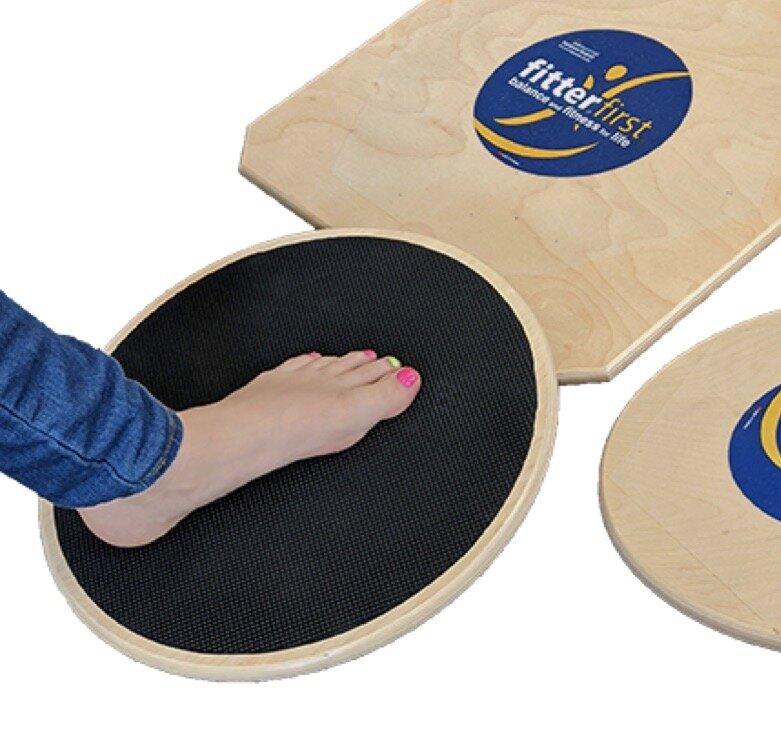Is your Ankle Sprain Rehab Done Barefoot? It should be!

Lateral ankle sprains, while often considered a non-emergent injury, represent a significant musculoskeletal health problem and heavy financial burden on the health care system (Burcal et al.) In 2015, healthcare costs for lateral ankle sprains in the United States totaled $4.5 billion! Whoa!
With ankle sprains making up over half of the high school and collegiate sports-related injuries, this injury is one to be better understood - and really is best if it’s prevented in the first place! One of the most common reasons of why I favor prevention versus post-injury reactive rehab is that over 30% of ankle sprains continue on to present with chronic and recurrent symptoms in what is referred to as chronic ankle instability or CAI.
What is Chronic Ankle Instability?
The condition of CAI is defined by 2 main characteristics:
-
recurrent ankle sprains
-
complaints of instability or giving way
Now there can be various reasons for CAI, such as a mechanical loss of integrity due to torn ligaments or a disruption in the proprioceptive or sensory stability of the ankle joint. In my Podiatry office, I see most recurrent symptoms due to the repetitive damage of the ankle ligaments, joint capsule, musculotendinous units, and skin which leads to sensorimotor delays.
This means that CAI is a condition of neuroscience or neuromucular and proprioceptive control, and should be rehabbed as such.
Optimizing Neurorehab of the Ankle
To better understand the neuromuscular control of the ankle it’s important to differentiate the types of nerves that control the ankle. The sensory nerves that are used to perceive a shift in the ankle joint can be broken down into proprioceptors, exteroceptors and mechanoceptors
Proprioceptors are nerves or receptors located in the muscles, tendons, and joints that use internal stimuli to detect changes in position or movement of the body or its limbs. An example of these would be Golgi tendon organs or muscle spindles.
Exteroceptors are sensory receptors which receives external stimuli and helps our body relate to the external environment. Mechanoceptors in the plantar foot are a type of exteroceptor.
Mechanoceptors are sensory nerves that respond specifically to touch or mechanical stimuli such as deep pressure or vibration. These are found in the palm of the hand and the bottom of the feet are our focus at Naboso Technology.
A lot of current ankle rehab literature and programming focuses on the proprioceptive side of ankle stability. This is done through training on a wobble boards, the Bosu, a dyna disc or similar. This type of proprioceptive training on unstable surfaces trains what’s called peroneal reaction time.
Peroneal reaction time (PRT) is really a stretch reflex that detects a shift in the ankle joint (and subtalar joint) position and is used to trigger a motor response to correct and re-stabilize the ankle. When integrating this type of ankle rehab we want to look at the research and see what type of results are achieved and perhaps see if there is a more effective way to do this the of rehab training.
Is PRT Training Effective?
The research supporting unstable surface training or PRT training after ankle sprain is really mixed. One such study by Raymond et al. found that 4-week wobble board training programs improved proprioceptive acuity in the inversion/eversion direction but only at the slowest velocity.
Similar studies to Raymond et al. suggest that perhaps training only PRT may not reduce future injuries as it’ not training a fast enough sensory response system. This has led researchers to look at combined rehab programming such as that which includes additional stimuli - vibration, texture.
Enhancing PRT Training with Vibration & Texture!
Cloak et al. demonstrated that combining vibration and wobble board training had better improvement in center of mass distribution, single leg balance and joint position sense among footballers suffering CAI when compared to traditional wobble board training alone.
Another study by Steinberg et al. used texture to enhance ankle rehab programming and found that three weeks of textured balance board training improved the ankle discrimination ability of ballet dancers at a faster rate than traditional wobble board training. The study went on to demonstrate that previously injured dancers had significant improvement in their ankle discrimination acuity scores by combining mechnoceptor and proprioceptor rehab.
How does Naboso come into play here?
By being a textured, small nerve proprioceptive insole and material company we play a critical role in how physical therapists and rehab specialists develop ankle rehab programming. We offer a system of products that can enhance all current rehab modalities and programming by simply adding in the mechanoceptor side of rehab.
We have proudly partnered with Fitter First, a North American leader in wobble board equipment, by offering the first-ever textured wobble boards for commercial use! The Naboso integrated wobble boards now allow the therapist to integrate mechanoception with proprioception. It really was one of the goals for when I launched this company.
Don't have wobble boards in your rehab center - or looking beyond just the wobble board and towards other proprioceptive modalities? Simply add the Naboso Neuro Material to that equipment as well!
We sell our material with adhesive so you can customize your rehab center or gym with our unique patent-pending neuro material. Simply contact Naboso at orders@nabosotechnology.com for more information
Stay #barefoostrong and remember #lifeissensory!
Dr Emily Splichal
CEO & Founder Naboso Technology